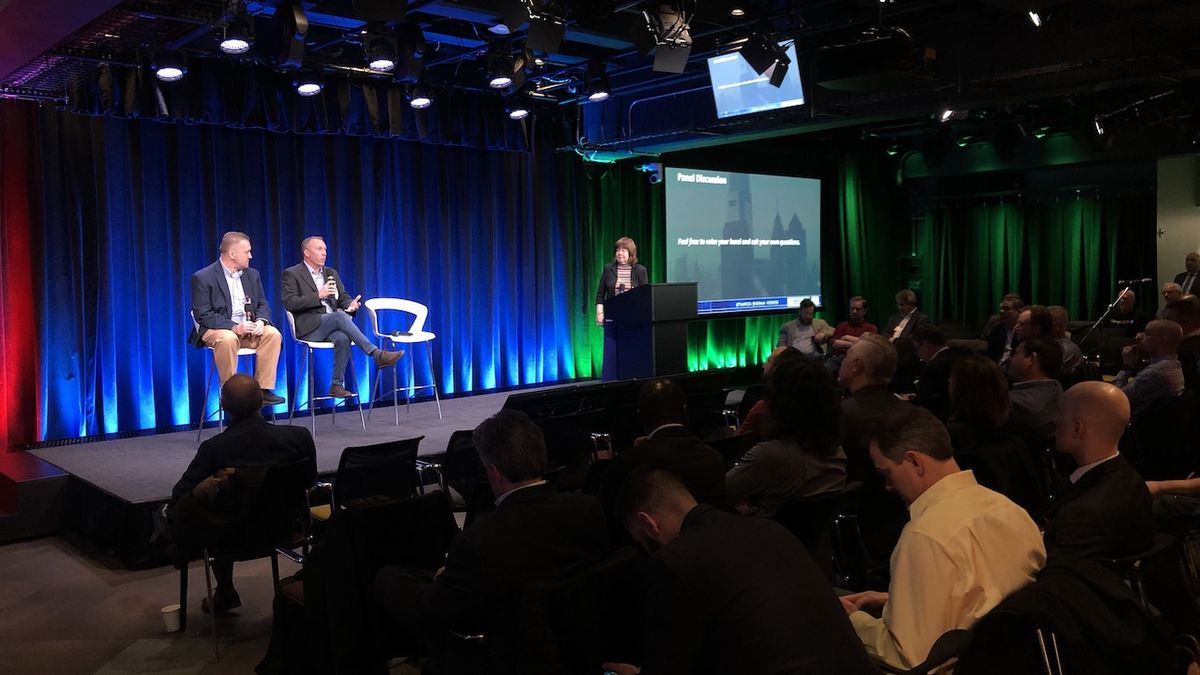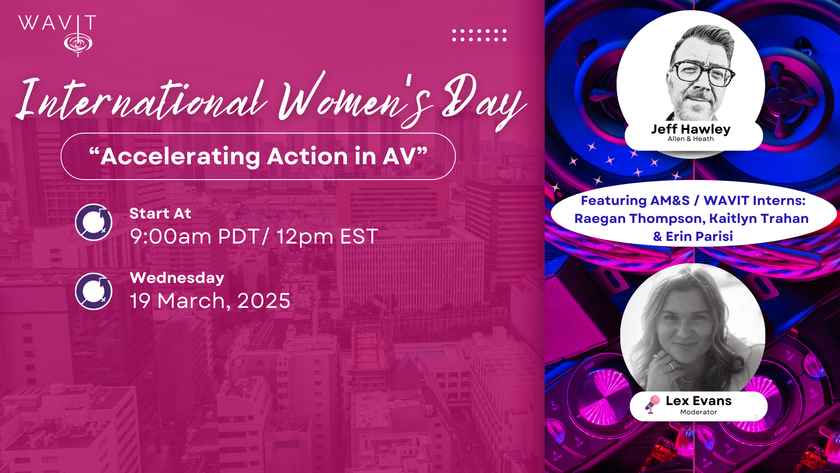In 2020, organizations need a solid unified communications strategy to succeed. But, with all of the vendors and platforms out there, there are a million different possible approaches to arriving at one—and the landscape is constantly changing. This was the subject of Tuesday morning’s session of the IMCCA’s Collaboration Week New York, which was held at Google’s Chelsea headquarters.
[3 Takeaways on the State of Collaboration From CWNY’s Kickoff]
“A lot of the same things we were dealing with 20 and 30 years ago, we’re still dealing with today,” said Dr. S. Ann Earon, president of Telemanagement Resources International and chairman emeritus of the IMCCA, in reference to the lack of unification in unified communications. “I think this is more of an evolutionary process than a revolutionary process.”
With this preface, Earon proceeded to give an overview of the state of competition, interoperability, and ecosystems in the industry. “More of the big players have finally put their toe in the water—by that I mean the Microsoft, Cisco, Google, and Amazon bigger companies,” she said. “The traditional vendors will face a crisis of prioritization in their investments, and the vendors that don’t significantly invest in cloud these days are going to fail.”
This fluidity means organizations need to adjust their timetables for implementing changes. “Gone are the days where we do these things and write them off over a three- to five-year period,” Earon said. “We’re having a leapfrogging of technology all the time, and we’ve become a very disposable society.”
Overall, Earon sees the industry moving from favoring combinations of “best of breed” products to consolidated, integrated suites that address every UC need. “It’s who’s got the best out there, who’s got the easiest out there, and who’s going to play in multiple sandboxes,” she said.
But, according to end users in the following panel discussion, this transition has yet to play out in practice. “The all-in-one solution is not the solution for organizations like us,” said Thomas Earley, manager of global infrastructure at the Ford Foundation. “We have Slack, and a lot of our partners use Slack, so we need to be able to interoperate between various platforms.”
“We’re going to have multiple toolsets,” agreed Kevin Hyatt, manager of workplace services at Disney. “I look at it from the 80/20 rule: what can we get out to 80 to 90 percent of the population? We’re always going to have little semblances of Cisco Webex or G Suite, or smaller platforms from a footprint perspective, but how do we kind of standardize on platforms?”
Hyatt compared the situation to the wider computing environment: “We have Windows and Macs, we have iOS and Android platforms,” he said. “We don’t isolate out that IT part of it, so why would we do that for a collaboration toolset? And we do tons of business with other companies, so we’re not going to force somebody to use our toolset to talk to Disney.”
Josh Klempner, vice president of multimedia technology at Citigroup, also agreed that the challenge lies in operating a mix of solutions. “It’s a continual learning and discovery path,” he said. “A lot of those [technologies] work great by themselves, but together, in a big, complex organization? That’s the big challenge. And I don’t think it’s possible to get it right the first time at all.”
According to the panelists, one barrier to the adoption of a streamlined platform—and indeed cloud-based communications in general—is regulatory policies. “For enterprise organizations, there are still countries in the world that will not release the telco laws, that they still want to control that voice traffic, that video traffic through their networks,” Earley said. “So moving to a cloud telephony system is not practical without putting gateway appliances in. If your goal is not to have infrastructure, that’s a no-go.”
Another challenge discussed was managing expectations: making sure users know that like cell phone service, some degree of failure is to be expected. Overall, though, the presenters feel that we’re moving in the right direction. “From a service ownership perspective, if I get one or two comments a day about a bad call, I’m OK with that—we do 12,000 video calls a day,” Hyatt said. “The trajectory of usage is going [up], while the volume of noise from an end-user perspective is going down.”
Following the panel, Sandy Jones, global sales lead at Google, presented on the benefits of cloud collaboration and his company’s efforts to refine the concept of the all-inclusive UC platform. “One of our firm beliefs is pure cloud, because of the simplicity, security, and speed,” he said. “We also recognize that this is a cultural change. Sometimes people think we’re trying to get people to work like Google. I think what we’re trying to do is get people to work like digital natives—trying to get people to embrace the internet, embrace the cloud, because it frees you from all these other pieces that you need to worry about and maintain and allows you to focus on your business.”
More from CWNY 2020:
3 Takeaways on the State of Collaboration From CWNY’s Kickoff
IMCCA Honors Randy Klein, Eric Yuan With Lifetime Achievement Awards













